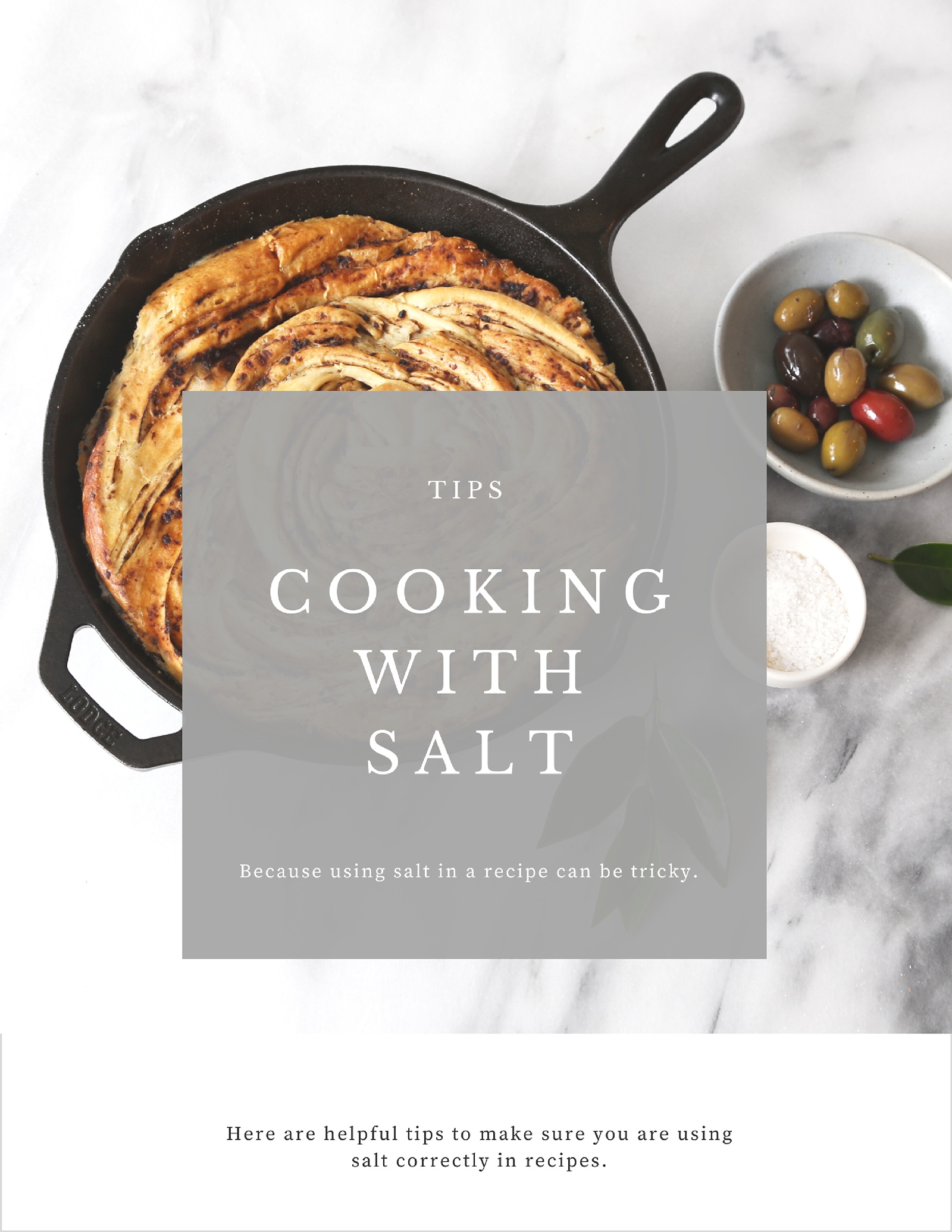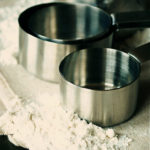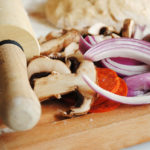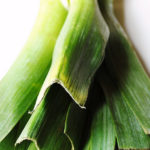
Walk into any seasoning aisle in the grocery or specialty foods store and you’re bound to find many different types of salt. Kosher salt, sea salt, and table salt are a few types that are most often found in kitchens. When it comes to cooking, one of the most important items to remember is to season the food, most often with salt and pepper, during each step of the process in order to end up with a perfectly seasoned dish.
There are many different types of salt that can be used when preparing dishes. However, when it comes down to it, salt is either mined from ancient seas that dried up years ago or evaporated from seawater. The main differences between salts are the color, flavor and texture. Sea salt and kosher salt tend to be larger crystals whereas salts like table salt tend to be very fine.
Tips for Cooking with Salt
Kosher Salt
This type of salt is mined or harvested from the sea. As implied in the name, it is manufactured under rabbinical supervision making this another distinction from other salts. This salt consists of coarse and irregular crystals that are large in size. Due to the shape and texture, this salt is great to use for the koshering process because it draws blood and juices out of butchered meats.
Many cooks prefer to have this type of salt nearby because the large crystals make it easier to pinch and add to dishes throughout the preparation process. They also tend to think of this salt as having a pure and clean flavor that enhances the overall taste of the finished product.
Sea Salt
This type of salt is harvest from evaporated seawater and undergoes very little processing. Seawater is often collected in large ponds or pans and as the water evaporates the salt crystals fall to the bottom. These crystals are then collected using a raking method. Due to the lack of thorough processing, this salt maintains minerals from the water which add flavor and color to the crystals. Oftentimes, this flavor and color are lost through the cooking process.
Table Salt
Table salt is mined from salt deposits and is made up of sodium chloride, iodine sources, stabilizers for the iodine and anti-caking compounds. Due to the fineness of the grain, a little bit of this salt goes a long way since there are more crystals in one measurement compared to Kosher or sea salt. This salt is placed on the table in a shaker next to the pepper shaker and is sprinkled on food to add more flavor to the finished dish.
Tips on Salt Usage
- Substitute 1 tablespoon of coarse or Kosher salt for 2 teaspoons of table salt.
- Use salt sparingly when cooking seafood since it tends to be naturally high in salt.
- Wait until water boils before adding salt into a pot prior to adding pasta or vegetables.
- Add unsalted liquid to an over-salted liquid dish and then toss in a peeled and quartered potato to reduce the amount of salt flavor. Discard the potato once enough of the saltiness has been absorbed.
- Use coarse or Kosher salt when salting meats. The texture will help caramelize the natural sugars in the meat while forming a crust that seals in the flavor and moisture.
Kosher salt, crystalline sea salt, flaked sea salt, Fleur de Sel, rock salt, pickling salt … the list goes on and on. There are so many different types of salt that can be used when preparing savory and sweet dishes. However, in my house you will always find table salt and Kosher salt. I love having Kosher salt handy when I’m preparing a savory dish.
10 Cute and Functional Salt Cellars
To make it easier to add pinches of salt to dishes throughout the preparation process, have a salt cellar on your counter. Here are 10 salt cellars that come in handy when preparing recipes.
What are some tips and tricks that you use when cooking with salt?
Disclaimer: This post contains affiliate links.






Great informative post!!
Great info! I admit that this year I've become quite addicted to kosher salt and use it in just about everything. :-)
Your photos are beautiful, Jen! I LOVE the use of the plant in the background. I feel like there is a piece of me in your blog. ;) -Lauren
I love salt – probably too much. And we definitely use a lot of different kinds of salt. My favorite is kosher or sea salt – as Melissa pointed out, shows up great in photos :)
I didn't know I was supposed to use Kosher Salt for meats! Thanks!!
Another great post! Thanks!
Great, informative post – loved reading about the different types of salt!
Fantastic information in this post. I always use kosher salt in my cooking, table salt in baking, but you taught me a lot I didn't know.
Salt is important part of cooking. Without salt we can't get test. Also salt is good for health.